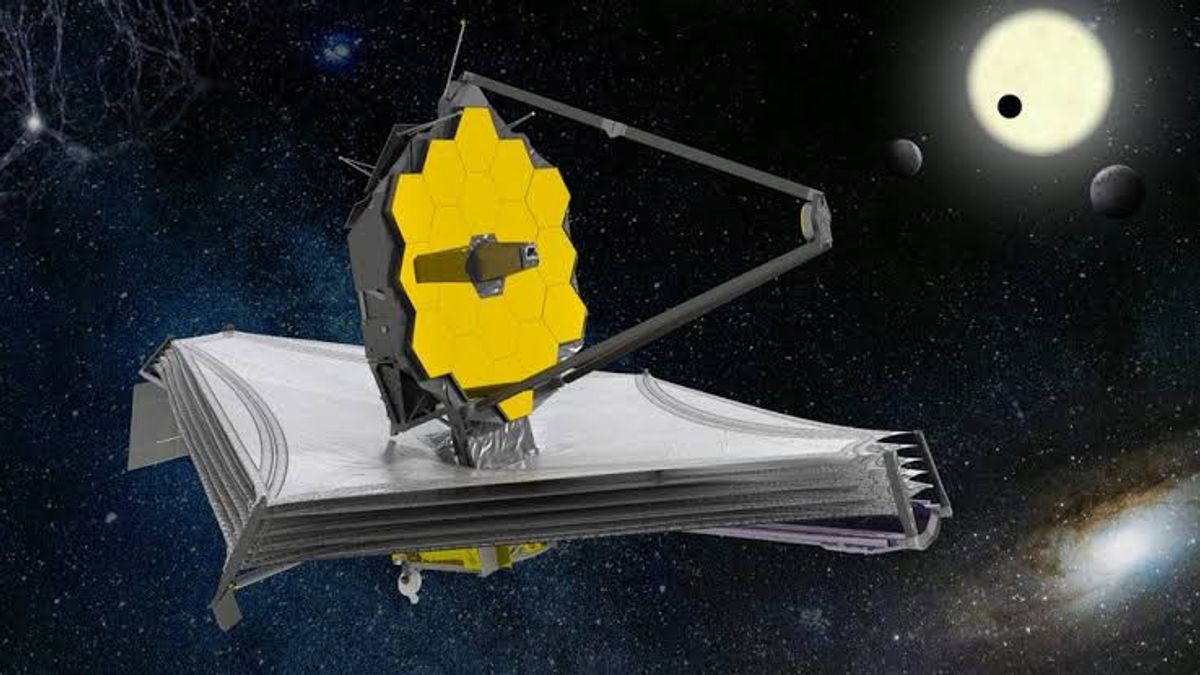JAKARTA - NASA and ESA's James Webb Space Telescope (JWST) was launched into space to peer back through time into the early universe. Another possibility, this telescope can find aliens.
A new study suggests that the $10 billion observatory may also be able to spot life beyond Planet Earth based on air pollution from their planet.
Studies conducted by the Blue Marble Space Institute of Science in Seattle, USA where possible, they can use the Webb Telescope to search for industrial pollutants in the atmospheres of exoplanets. He claims that if the space telescope detects chlorofluorocarbons (CFCs) from alien worlds, it can show that they are habitable.
It is exactly as identified on Planet Earth by CFCs, which are released industrially as refrigerants and cleaning agents. They famously created a large hole in the Earth's ozone layer in the 1980s, before an international ban on their use in 1987, to help reduce CFCs back to less harmful levels.
The research paper is available in preprint in Earth and Planetary Astrophysics, with the researchers describing the chemical as a powerful greenhouse agent with a long atmospheric residence time, which is almost certainly the result of civilization and capable of rapid industrialization.
However, they caution that there are limitations to the Webb Telescope's ability to find CFCs. For example, if a planet's star is too bright, it will cancel out the signal.
To have the best chance of finding a chemical signature, telescopes must look for long-lived faint red dwarfs, known as M-class stars. The researchers gave the example of TRAPPIST-1, a red dwarf that is 40 light-years from Earth and has several Earth-sized planets orbiting within the habitable zone.
Launching the Daily Mail, Wednesday, February 23, the Webb Telescope can see CFCs on planet TRAPPIST-1, because dim stars will not remove CFC marks in the same way as bright stars like the Sun.
The only problem is that M-class stars are usually not conducive to life, because when they are young, they send out powerful solar flares that have proven to be deadly to life on nearby planets. However, after this unstable phase, they settle down with age, so there's still a possibility.
"CFCs are important examples of technological signatures on Earth, and detection of CFCs on a planet like TRAPPIST-1 would be difficult to explain through known biological or geological features. Our civilization continues along a path of population growth and energy consumption, while we are only beginning to understand how far where our technology can be detected at astronomical distances," said lead researcher, Jacob Haqq-Misra.
"Continued exploration of how past, present, and future civilizations will affect Earth detection remains an important goal for understanding the prevalence of biosignatures and technosignatures in our galaxy."
Detection of CFCs in the atmospheres of Earth-like planets is highly dependent on the radius and spectrum of the host star, and the TRAPPIST-1 system in particular is very supportive in that regard.
The English, Chinese, Japanese, Arabic, and French versions are automatically generated by the AI. So there may still be inaccuracies in translating, please always see Indonesian as our main language. (system supported by DigitalSiber.id)








